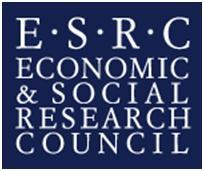Where there’s a Will, there’s a way?
Please reference as: Liz Stanley (2017) ‘Where there’s a Will, there’s a way?’ Whites Writing Whiteness www.whiteswritingwhiteness.ed.ac.uk/curiosities/Where-theres-a-Will/ and also provide the paragraph number as appropriate if quoting.
1. Wills raise interesting questions that are relevant to WWW research. Their content shows important and consequential things about lineage, connection and property within the white communities in South Africa. Their existence in an organisational sense demonstrates the existence of a legal system and the monopolisation of legitimate authority in the disposition of persons and property on the part of a ruling apparatus or state, a state utterly monopolised by the same white communities. And how they are written raises boundary issues concerning what is and isn’t a letter. It is this latter aspect that is discussed here, and what is focused on is the question of whether a Will can be seen as a kind of letter, or more modestly as stretching the boundaries of what a letter is, or more modestly still as opening up some border crossings that occur between letters and Wills.
2. On one level, a Will is a different kind of document from a letter and has a different kind of purpose. More specifically, a Will lacks individual address and there is ordinarily no possibility of a response that the signatory could receive from the people named in it, for its contents usually remain privy during the lifetime of the signatory and a response would come only after this person’s death. But at the same time, Wills and letters do have some features in common.
3. A Will has communicative intent, indeed of a strong kind that is given legal force. That is, the dispositions of property or other items that it makes have a binding quality. Relatedly, a Will is highly performative in the JL Austin sense of the term, because its contents execute the decisions and actions detailed in it. And the whole thing appears over the binding signature of the person who has made the Will, which certifies its legitimacy and authority in the same way that a signature does for a letter. Also significant here is that, although a Will does not have a personal address to a named individual, it does have a more general address to a future (furure when it was written and signed) that has become the present (when its terms are executed), a time when the people who are the legatees named in it receive the items bestowed. It is also worth noting at this point that a Will also often names people either as individuals or in an organisational capacity as executors, who have the legal capacity and duty to make its communicative intent regarding these matters a binding one.
4. A Will, then, is not a letter as such, but it does have some letterness aspects. It shares various features of epistolarity, although not in a strong way, although specific examples will come closer to this or further from it, depending on how they are written and structured. Wills also have other characteristics, including that their legal standing and status brings them under the aegis of the legal profession. This is not noted for the cheapness of its services. It is a historical fact that lawyers have provided specialist services for specialist prices more or less since the profession came into being. As a consequence, other people with some legal knowledge also provided such services, sometimes like a public notary making a charge although a lesser one; and sometimes without charge, as with someone providing this service for friends and family. The Eastern Cape landowner and farmer Dods Pringle provides a case in point [and see the Trace on this at http://www.whiteswritingwhiteness.ed.ac.uk/traces/wills-hockly-pringle/].
5. The Will that Dods Pringle drew up for his mother-in-law Elizabeth Hockly in November 1857 has two letter-like features. The first is its ‘To whom it may concern’ mode of address near its start, and the second that the place where she was resident, a farm called Eildon, appears as the address that she was ‘of’. Thus the Will starts, “Be it known to all whom it doth shall or may concern that upon the first day of November in the year of our Lord one thousand eight hundred and fifty seven I Elizabeth Hockly ^of Eildon^…”.There are other letterness aspects as well. It is worth adding to the earlier trace discussion and spelling these out here.
6. The first comes with, “+ I hereby appoint W.D. Pringle and Edward Hughes to be my Executors of this my last Will and testament and administrators of my effects and Estate giving and granting unto the said W.D. Pringle and E. Hughes all such power as is required by law I also exclude from my estate or magistrates and every person or persons who otherwise might interfere with my Estate”. These stipulations are addressed in a ‘to whom it may concern’ kind of way. That is, it is being tacitly addressed to what was the future when the Will was made, a mode of address which is in the way directed to ’the law’ which would uphold the “I thereby appoint” and “I also exclude” commands or requirements shown in this extract.
7. A further stipulation follows. This is that “It is my wish and desire that the Executors do not send an inventory of my Estate and effects to the Master of the Supreme Court.”. The “my wish and desire” here is of the same kind as ‘hereby appoint’ and so on, in being addressed seemingly to everyone and no one, but actually to ‘the law’ that would uphold these wishes, which are binding ones because encased within the Will.
8. These are all the injunctions or commands made in Mrs Hockly’s Will, although there is more detail about some of them than quoted here (see the entire Will at the url above). These set out the disposition of Hockly’s property and her effects and then they stop.
9. Regarding Dods Pringle’s Will, dated March 1876, which he was also responsible for drawing up, this has some letter-like aspects to it as well, but which strike the present-day reader differently. It uses a similar impersonal mode of address to what is in the Hockly Will concerning its stipulations, but it does this in a curiously active way. It contains a very large number of ‘I’ injunctions in relation to its many mentions of property of different kinds. Almost every paragraph starts with verbs indicative of agency and action from beyond the grave and are expressed in the first person singular: I direct, I give and bequeath, I direct, I declare, I nominate and approve, I reserve. These not only convey a strong sense of agency, that Pringle was intending to stay in control after, or rather through the means of, his death. They also inject in a strong way the voice of ‘I’ as the author of the document concerned and its many directions to un/named others. That is, those unnamed and occupying formal positions as executors and so on, and those named as beneficiaries.
10. What light does this throw on the borders between Wills and letters and letterness? This agentic feature of Pringle’s Will is not just about ‘I’, but also about ‘you’. That is, these are requirements and demands addressed by ‘I’ Dods Pringle to a non-specific but still not entirely generalised ’you‘, probably with executors as formal versions of ‘you‘ in mind. And alongside this there are the beneficiaries, who will receive the result of these requirements and demands being executed, who are frequently named within the Will.
11. It adds up to a sort of direct address, ‘I-to-you’, although of a non-specific kind, a curious way of writing and very different from how the Hockly Will comes across to a reader now. Clearly Dods Pringle had more property and more family and related dependencies on him than did Elizabeth Hockly; and when the Will was written he was in his prime, while Hockly had been ailing and would shortly die. Put simply, he had a lot that had to be decided about, regarding how best to provide for future circumstances. However, it seems that something more was going on than this.
12. What comes through is that Dods Pringle as the writer of a Will was able to leave behind agency and specific address when drafting a Will for someone else. But when doing so for himself, these things were far less easy to separate off, so that his Will takes on more (but not all) of the letterness aspect of direct address. However, a letter inscribed entirely around direct address would be a very demanding and opinionated kind of letter and might indeed occasion affront or anger on the part of its addressee/recipient, depending on circumstances, although it would still exist within the spectrum of what a letter can be. What ‘a Will’ is can incorporate many variations while still adhering to the legal formalities regarding the required features, with Dods Pringle’s demanding and rather relentless, and also curiously letter-like, ‘I’ among the variations.
Last updated: 23 December 2017





